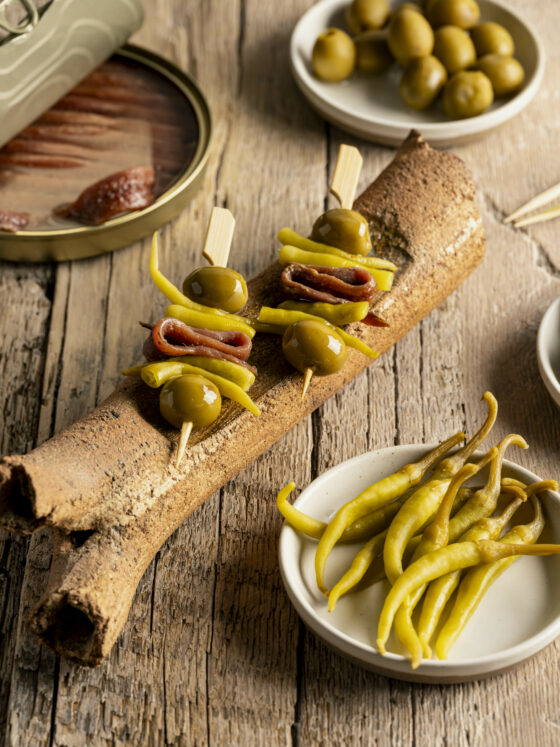The perfect Gilda: a tasty tribute to Basque pintxos
Discovering the world of Basque pintxos is an adventure. Basques are proud of their culinary heritage and have strong opinions about what makes a dish authentic. This makes my challenge all the greater. Even so, I'm going to immerse myself in this amazing world of food. So, let's kick things off with the OG pintxo: the Gilda. This snack is a great example of three local ingredients that are combined to create something special: green olives, anchovies and pickled piparra, a local Spanish pepper. In this blog, we're going to take a closer look at the origins of the Gilda, find out what makes this dish so special, and compare pintxos and tapas. I'll also share a simple recipe so you can make the most delicious Gilda and variations at home. Get ready for a culinary journey full of flavour and tradition. Buen provecho!
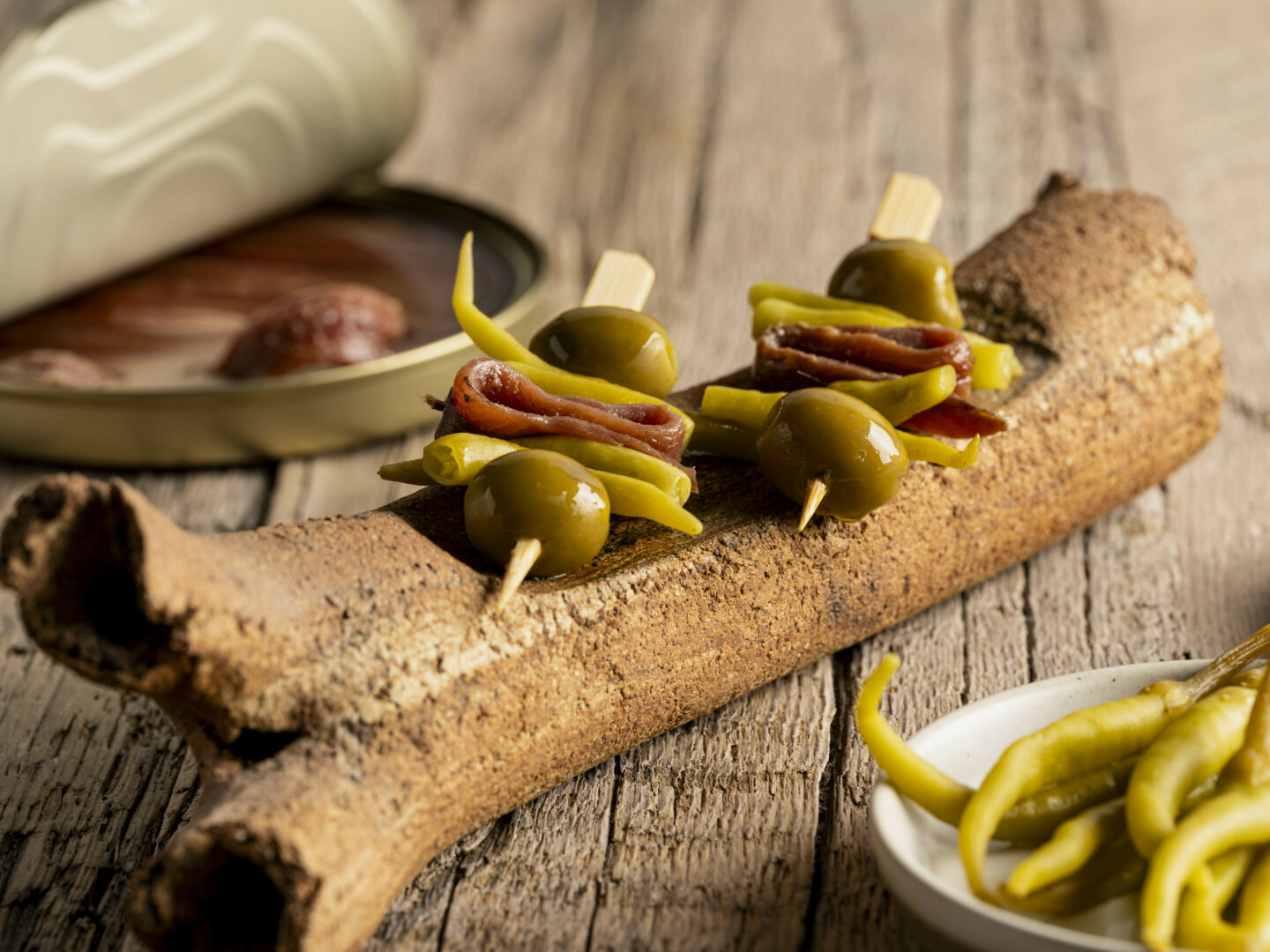
Where did the first pintxo come from?
There's a story going around that the first pintxo was invented back in the 1940s in a bar in San Sebastián called Casa Vallés. Here, Txepetxa had the great idea of putting some of the most favourite local ingredients on a wooden skewer. This is the most common story, but actually, there are signs that the Gilda was around at least 20 years earlier.
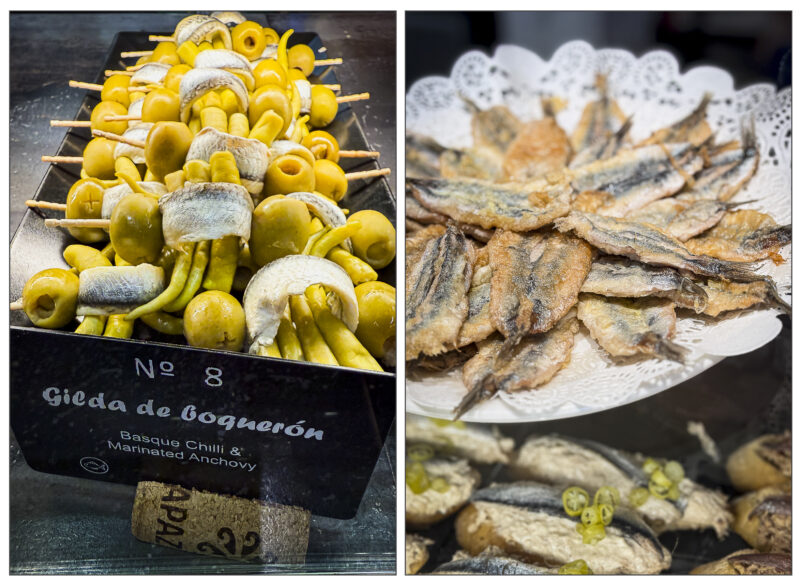
What's a pintxo?
Pintxo is the Basque word that comes from the verb pinchar, which
means to prick, skewer or pierce. Basque pintxos were originally served
on a stick, but later, also on bread held together by a skewer.
Why is the spiciest pintxo called Gilda?
Gilda is a 1946 film starring Rita Hayworth, who was known for her flamboyant style. The film was shown at the San Sebastian Film Festival in 1948, and the most popular and spicy pintxo was named Gilda at Casa Vallé, in honour of Rita Hayworth's curves.
The best Gilda: quality above all else
You make a Gilda with the best ingredients. Only the highest quality is good enough for this simple pintxo.
Olives: make the right choice
Use pitted, green Manzanilla or Gordal olives. These can be optionally stuffed with garlic, almond, lemon or paprika. Manzanilla olives have a firm texture and mild flavour, while Gordal olives are thick and fleshy.
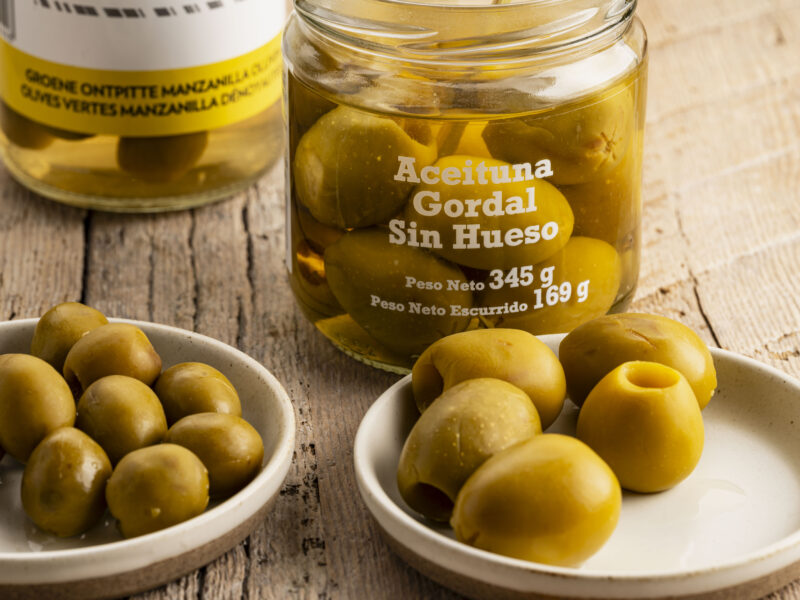
Anchovies of the Cantabrian Sea: the best in the world
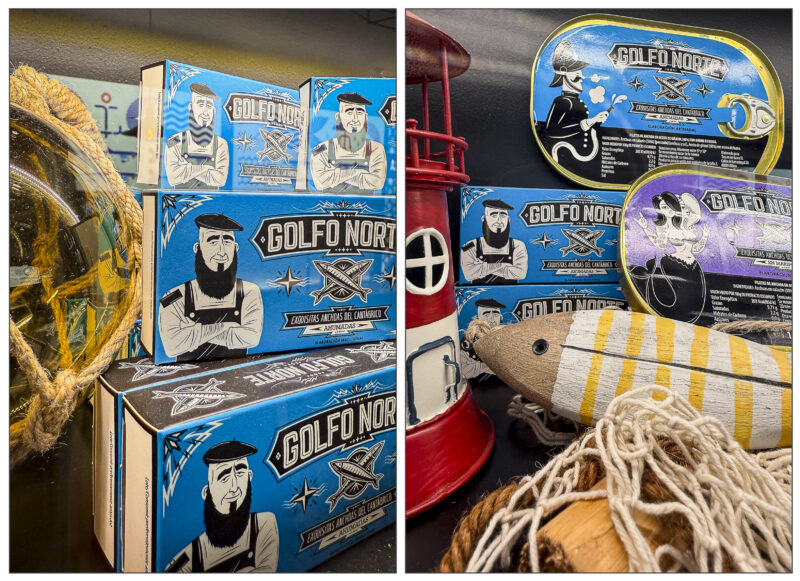
For the perfect Gilda, use only the best anchovies from the Cantabrian Sea. These anchovies “Made in Spain” are renowned for their quality and taste for the following reasons:
- Fish stock: The European anchovy (Engraulis encrasicolus) lives in the Bay of Biscay and the Cantabrian Sea, where the fish stock is in good condition thanks to the low exploitation rate, unlike other parts of Europe.
- Fishing period: Anchovies are caught in May along Spain's northern coast when the fish have maximum concentration of omega-3 fatty acids and are at their best.
- Sea water: The water of the Cantabrian Sea is cold, nutrient-rich and pollution-free, which contributes to the growth and optimum flavour of the fish.
- Sustainable fishing: Anchovies are caught sustainably, with respect for the marine ecosystem and according to catch quotas that follow the advice of ICES (International Council for the Exploration of the Sea).
- Artisanal processing: After being caught, anchovies are artisanally processed. They are beaten to drive out the blood, scaled, cleaned, salted and then matured for months.
- Olive oil: The anchovies are preserved and packed in extra virgin olive oil of the highest quality.
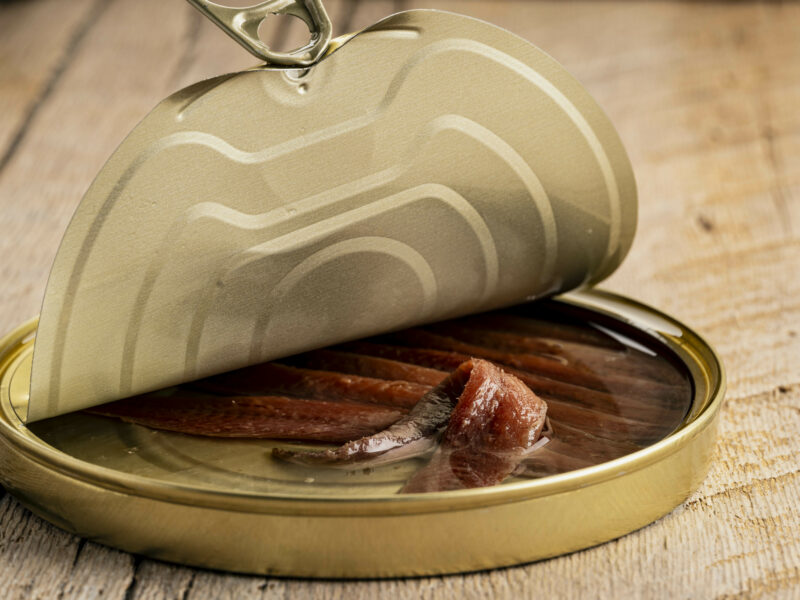
Piparra: the perfect pepper
The piparra is a chilli pepper from the region around Ibarra in the Basque Country. These peppers are bright green, have a soft skin and texture, and are slightly spicy. They are thin and can be up to 15 cm long. To tone down the strong vinegary flavour of pickled piparras, just rinse and dry them using a lettuce whisk. Repeat the process to remove any excess vinegar in the hollow peppers.
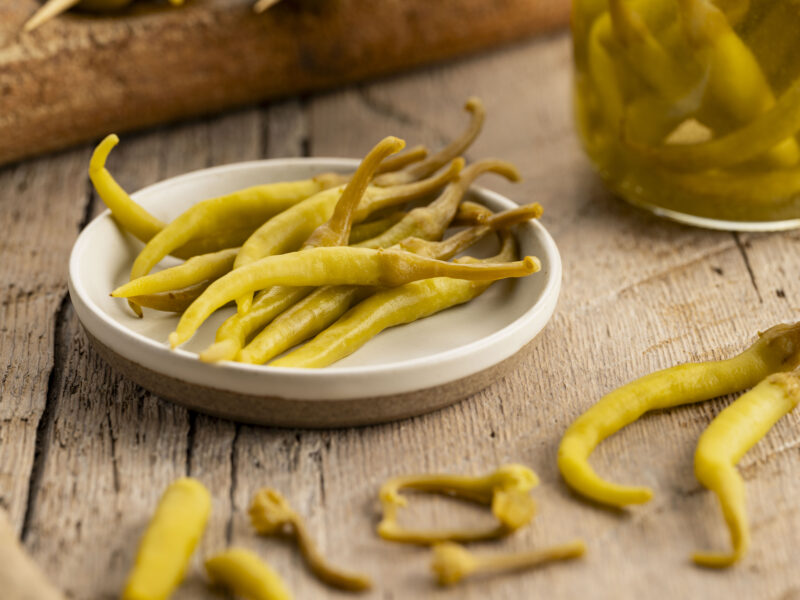
Olive oil: the golden ingredient
The prepared Gildas are topped with extra virgin olive oil of the highest quality.
The skewer: small but significant
Even the skewer matters. Use good-quality wooden skewers, about 10 cm long and with one pointed end. Originally, flat wooden sticks were used to prevent the ingredients from spinning around.
Pintxos versus tapas: what's the difference?
Pintxos and tapas are both delicious snacks, served with drinks before a meal. They might seem to be similar, but they're actually quite different in the ways they're prepared and served.
Tapas: it's all in the simplicity
Tapas are small portions of simple dishes served on a plate. They are often offered for free with a drink, especially in central and southern Spain. Cities such as Granada, León, Madrid, Seville, Cordoba and Salamanca are known for their delicious tapas. Typical tapas include green olives, boquerones in vinegar, patatas bravas and cubes of tortilla.
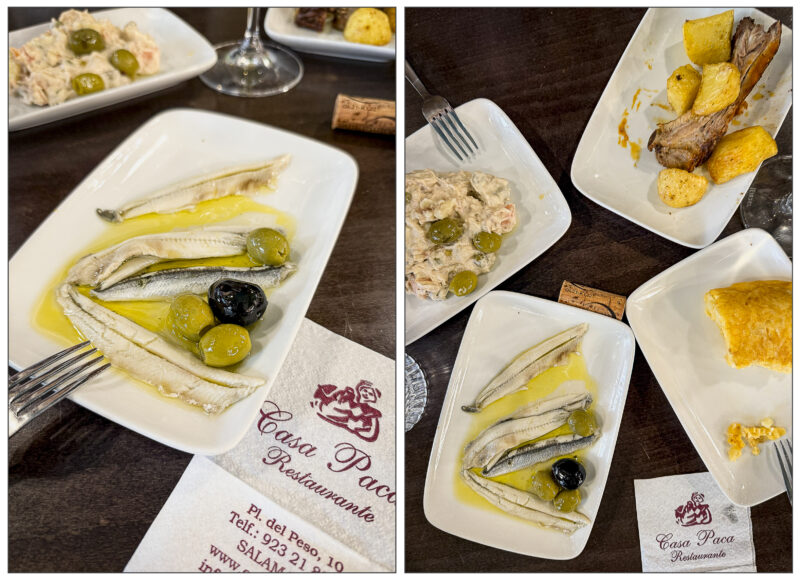
Pintxos: a sumptuous snack
Pintxos are more elaborate than tapas and consist of richly topped pieces of bread or garnished skewers, also known as banderillas. The carefully chosen and highly stacked ingredients are often held together with a skewer.
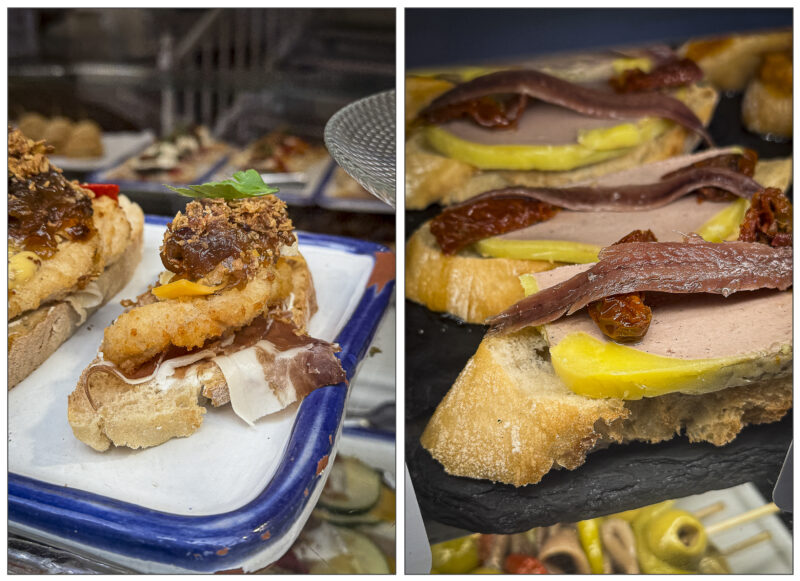
Pintxos are a Basque tradition and are not offered for free. They're usually eaten in a bar while standing, accompanying a glass of local wine, beer or cider. Bars in the Basque country often showcase a wide range of carefully prepared pintxos to choose from. Hot pintxos can be ordered from a menu typically hanging on the wall.
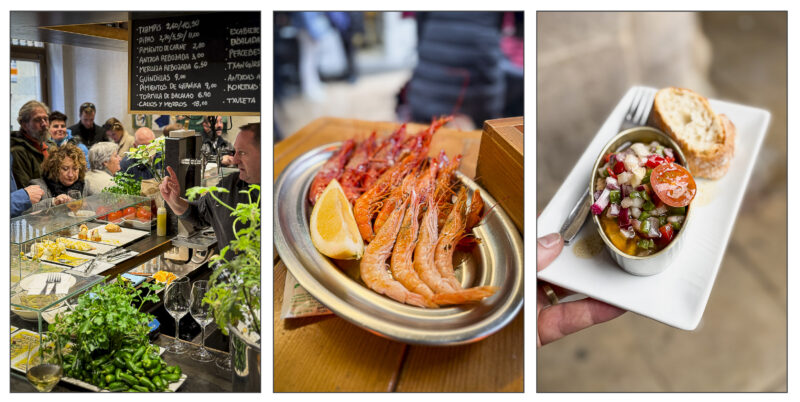
Gilda and banderillas: the pintxos that are ‘en vogue’ again
Until a few years ago, the Gilda and its variants were fairly unknown outside the Basque Country. Now you can find them in many bars all over Spain, sometimes with surprising combinations of ingredients.
Indurain: a pintxo named after a cyclist
Indurain is a Spanish cyclist who became the first Spaniard to win the Tour de France. He became world-famous for his five consecutive victories in the Tour de France from 1991 to 1995. As a tribute to this exceptional athlete, the ingredients of the Gilda were enhanced with a cube of albacore tuna at the bottom and a piece of onion at the top. The result was the pintxo Indurain.
Banderillas: colourful combinations
Over time, there've been many different versions of the Gilda and the Indurain. For example, quail eggs, chunks of peppers, garlic confit, octopus, cheese, artichoke, boquerones and even smoked salmon were added. These skewers are known as banderillas, which is a term that comes from the colourful spears used during bullfights.
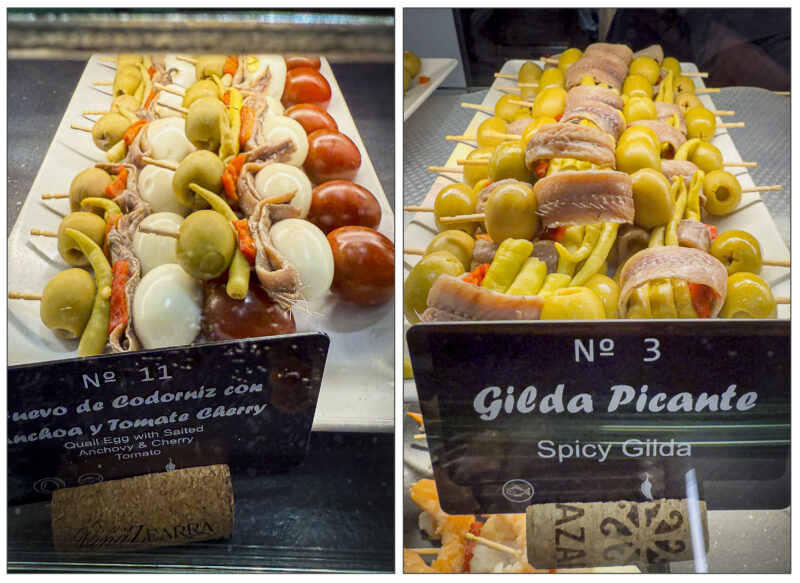
Here are some favourite combinations:
- Olive, anchovy, paprika, artichoke
- Olive, feta, dried tomato, anchovy
- Olive, octopus, pickle, pickled onion, pepper
- Olive, quail egg, boquerones, piparra
- Prawn, piparra, octopus, pepper
- Piparra, pickled oyster, onion, gherkin
- Olive, artichoke, jamon, piparra
- Olive, piparra, anchovy, quail egg, cherry tomato
- Tuna, piparra, olive, gherkin, macedoine of onion and peppers
- Tuna, white asparagus, olive, piparra
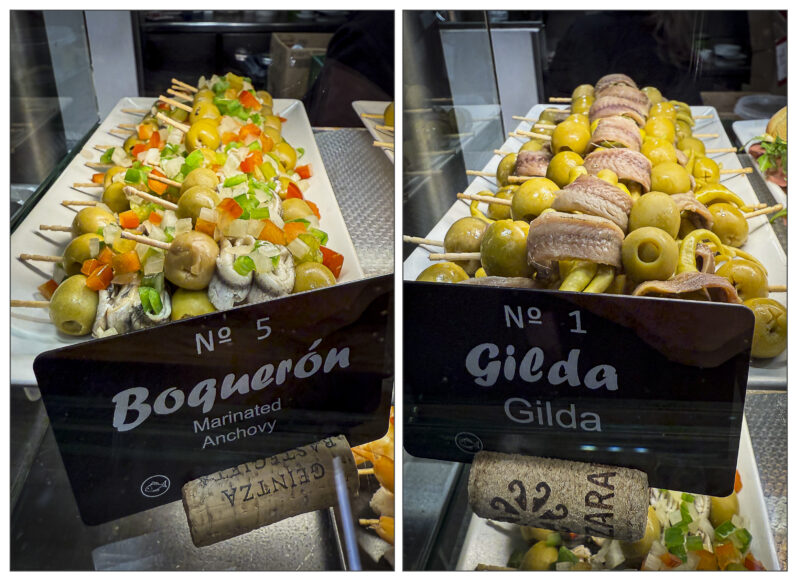
Recipe: the perfect Gilda
The Gilda recipe is pretty much as easy as they come: just three ingredients on a stick. But as I said before, the quality of your Gilda depends completely on the quality of the ingredients. When I was in Spain last, I went shopping in Bilbao and San Sebastián, but there are lots of online shops that sell really good Spanish products too.
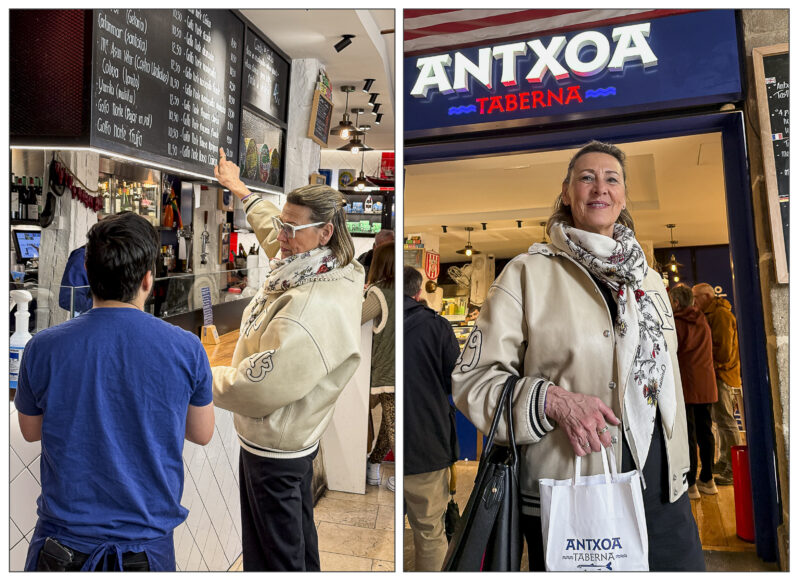
Ingredients for 4 Gildas:
- 8 pitted Manzanilla or Gordal olives
- 4 Cantabrian anchovy fillets in olive oil
- 8 pickled piparras
- 4 wooden skewers of at least 10 cm
- High-quality extra virgin olive oil
-
Preparation
- Take the stalks off the piparras and cut them in half.
- Slide an olive onto the skewer halfway down, then add two pieces of piparra.
- Fold the anchovies into the shape of an S and thread them onto the skewer.
- Add two more pieces of piparra to finish, and then just a final olive.
- Just repeat these steps until you have four Gildas.
- Put the gildas on a platter and drizzle with some extra virgin olive oil.
- Serve the Gildas at room temperature.
![Blog Gilda 00033]()
